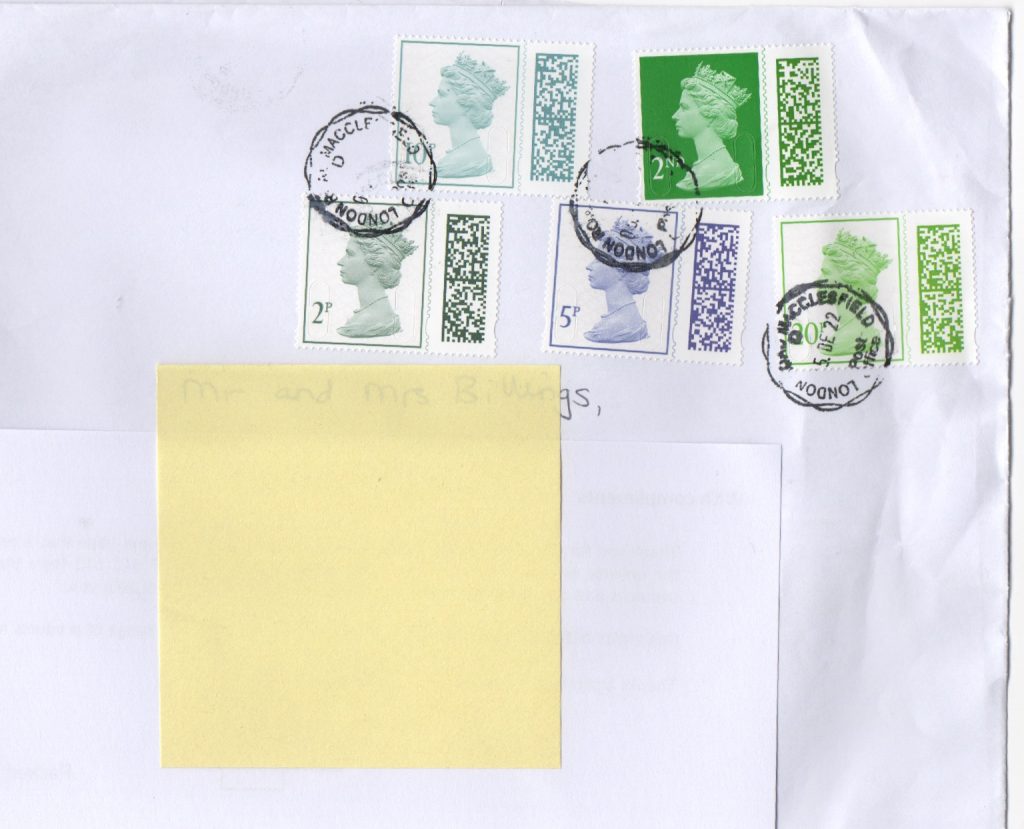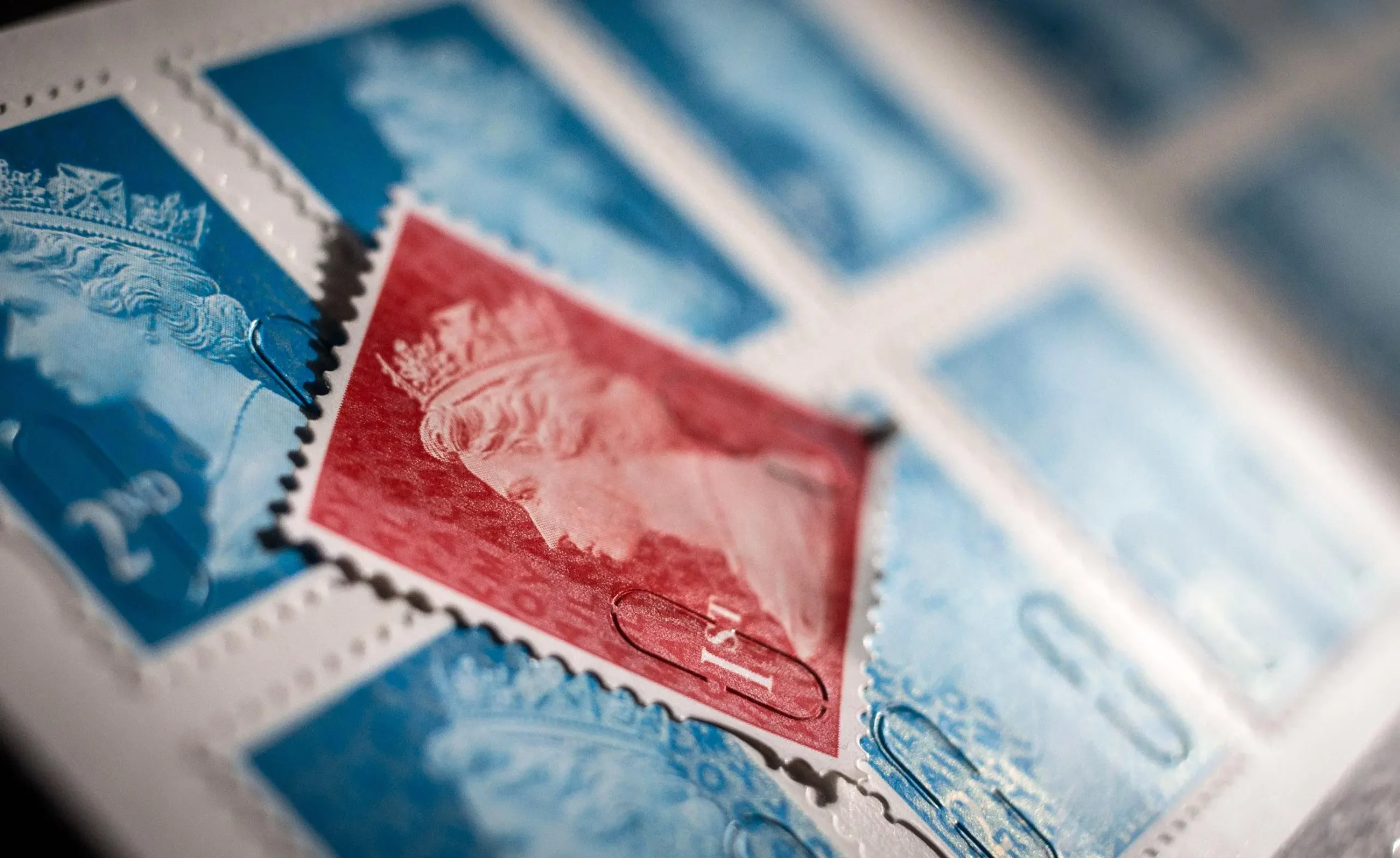Yes, you can generally put two stamps on a large letter if the total value of the postage meets or exceeds the required postage for the size and weight of the letter.
However, it’s essential to ensure that the stamps you use are valid for postage and that the total amount is accurate.
Furthermore, if the total value of the stamps is higher than the required postage, you won’t receive a refund for the excess amount. Additionally, keep in mind that postage rates can vary by country and postal service.
How Can Properly Use Multiple Stamps on a Large Letter?

Unlocking the art of using multiple stamps to correctly adorn a large letter involves a strategic blend of value calculation and precise placement.
When it’s acceptable
Meeting or exceeding required postage: Using multiple stamps on a large letter is acceptable when the total value of the stamps meets or exceeds the required postage for that particular mail item.
Additionally, this ensures that the letter has sufficient postage to cover its journey through the postal system.
Moreover, it’s crucial to accurately determine the appropriate postage based on factors like size, weight, destination, and postal service regulations.
Ensuring validity of stamps: Stamps used for postage should be current, valid, and issued by the postal authority. Different stamps might have different denominations, and their values may change due to adjustments in postage rates.
In addition, ensure that the stamps you use accurately reflect the current postage rates to avoid underpayment.
Risks of over-postage
No refund for excess postage: If you apply stamps with a total value that exceeds the required postage, most postal services typically do not provide refunds for the excess amount.
Additionally, this means that any additional postage paid is effectively lost. Over-postage can occur when you overestimate the postage required or use higher denomination stamps unnecessarily.
Wasting valuable stamps: Stamps have monetary value, and applying more stamps than necessary can lead to wasting these valuable resources.
Additionally, stamps can be used for future mailings, so using them excessively on a single item might not be the most efficient use of your postage budget.
Understanding the Balance: While it’s important to ensure that your mail has adequate postage to avoid delivery delays or return-to-sender situations, it’s equally important not to overpay for postage.
Moreover, striking the right balance between meeting postage requirements and avoiding over-postage is key. To do this effectively:
Accurate Calculation: Utilize postage calculators or consult your local postal service to accurately determine the required postage based on the item’s characteristics.
Appropriate Denominations: Choose stamps with denominations that align with the calculated postage.
Furthermore, using a combination of stamps with varying values can help you achieve the exact required postage without overdoing it.
Flexibility: Postal services often allow you to purchase stamps of various denominations, so you can create combinations that match your postage needs more precisely.
Staying Informed: Stay updated on postage rate changes and regulations to ensure that your postage calculations remain accurate over time.
How Can You Understand Postage Requirements?
Navigating the intricacies of postage requirements demands a keen eye for detail and a clear understanding of mailing regulations.
Different types of mail (letters, packages, large letters)
When it comes to sending mail, postal services distinguish between various categories based on size, shape, and content.
Understanding these categories helps you determine the appropriate postage for your item. The three common categories are:
Letters: Typically, letters are standard-sized envelopes containing correspondence, bills, or greeting cards. Additionally, they are generally lightweight and flexible, making them the most straightforward category to send.
Packages: Packages encompass larger items that are usually more substantial and less flexible than letters.
In addition, these could include gifts, books, or other merchandise. Packages are subject to different postage rates and often require more detailed labeling.
Large Letters (Flat Mail): Large letters, also known as flat mail, are larger than standard letters but still fit within specific size and weight limits.
Moreover, they can be rigid or non-rigid and often include items like documents, certificates, or photos.
Factors determining postage
Size and weight of the large letter:
- Size: Postal services define size limits for different categories of mail. Large letters usually have specific length, width, and thickness restrictions.
Exceeding these limits might cause your mail to be classified as a package, leading to different postage rates.
- Weight: The weight of your large letter plays a crucial role in determining postage. Heavier items generally require higher postage. Moreover, postal services often have weight bands with corresponding postage rates.
Destination (domestic or international):
- Domestic Mail: Sending mail within the same country usually incurs different postage rates than international mail.
Moreover, some postal services offer various classes of domestic mail, such as regular, expedited, or priority, each with its corresponding rates.
- International Mail: Mailing items abroad involves more complex postage calculations due to differing rates and regulations across countries.
Additionally, international postage rates can vary significantly based on factors like distance, destination country, and service level (e.g., standard, express).
Postal service regulations:
- Regulations and Guidelines: Postal services establish specific regulations and guidelines governing mail classification, labeling, packaging, and postage.
Additionally, these regulations ensure email safety, efficient handling, and compliance with international mailing standards.
- Addressing: Accurate and clear addressing is crucial for proper mail delivery. Postal services have guidelines for formatting addresses to minimize errors and delays.
- Special Services: Some mail might require additional services, such as tracking, insurance, or delivery confirmation.
Moreover, these services often have associated fees that contribute to the overall postage cost.
What Are The Following Steps to Determine Proper Postage?
Embarking on a successful postage journey entails a series of systematic steps, each crucial for accurately determining the appropriate postage for your mail.
Weighing the large letter:
Accurate postage calculation begins with weighing the large letter. Use a reliable postal scale to measure its weight in grams or ounces. Even a small difference in weight can lead to incorrect postage, potentially causing delays or returned mail.
Checking postage rates:
Contacting local post office: Your local post office is a valuable resource for obtaining information about current postage rates and regulations.
Moreover, they can provide you with printed rate charts or direct you to relevant online resources.
Using online postage calculators: Many postal services offer online postage calculators on their websites.
In addition, these tools allow you to input details about your mail item, such as its size, weight, destination, and service level, and receive an accurate estimate of the required postage.
Moreover, online calculators can be particularly helpful for international mail, as they consider various destination-specific factors.
Calculating total postage needed:
Calculate the total postage needed by adding up the appropriate postage rates for the specific characteristics of your large letter.
This might involve different rates for size, weight bands, and any additional services you choose, such as tracking or insurance. Moreover, ensure you consider both domestic and international rates if applicable.
How Can You Apply Stamps Correctly?

Mastering the skill of applying stamps accurately is a task of precision, where the right placement and technique play a key role in ensuring your mail’s successful journey.
Placing stamps in designated areas:
Most postal services have specific guidelines for where stamps should be placed on mail items. Stamps should generally be affixed to the top right corner of the mail item’s front side.
Avoiding stamp overlap or covering important information:
When affixing multiple stamps, be careful not to overlap them or cover any critical information, such as the recipient’s address or return address.
Additionally, overlapping stamps could lead to difficulties in reading these details and might result in delays or misdelivery.
Ensuring legibility of stamps:
Stamps should be affixed in a way that preserves their legibility. Stamps that are smudged, obscured, or partially torn might not be recognized as valid postage by postal workers or automated processing systems.
What Are The Alternatives Of Multiple Stamps?
Exploring alternatives to using multiple stamps opens doors to convenient postage solutions, such as postage meters, online postage, and prepaid envelopes.
Using postage meters or online postage services:
Postage Meters: Postage meters are machines used to print postage directly onto mail items.
Moreover, they offer convenience and accuracy, as they can calculate and print the exact postage required. They are especially useful for businesses that frequently send mail.
Online Postage Services: Many postal services and third-party platforms offer online postage purchasing and printing.
Additionally, you can calculate and pay for postage online, print labels with barcodes for tracking, and arrange for mail pickup or drop-off.
Purchasing higher denomination stamps:
Buying stamps with higher denominations can simplify the process of affixing postage and reduce the need for using multiple stamps.
However, it’s important to assess whether the higher denomination stamps align with your typical mailing needs to avoid overstocking.
Considering pre-paid postage options:
Some postal services offer pre-paid postage options, such as flat-rate envelopes or boxes. These options provide a fixed postage cost regardless of weight, making them convenient for specific scenarios where weight or distance varies.
FAQ’s
Is 2 stamps enough for a large letter?
The sufficiency of 2 stamps for a large letter depends on the letter’s weight, size, and destination. It’s important to ensure accurate postage.
Can I send a letter with 2 stamps?
Yes, you can use 2 stamps on a letter to cover the required postage, but ensure the total value matches the postage rate for the letter’s specifications.
How many stamps cover a large letter?
The number of stamps needed for a large letter depends on factors like its weight, size, and destination. Use sufficient stamps to meet the required postage.
Do A4 envelopes need 2 stamps?
A4 envelopes might require 2 stamps based on the envelope’s weight, destination, and postage rates. It’s advisable to calculate accurate postage.
What makes a letter need 2 stamps?
Larger size, heavier weight, or international destination are common factors that might require 2 or more stamps for a letter’s proper postage.
Do I use 1 or 2 postage stamps?
The number of postage stamps required depends on the specific mailing requirements. Use as many stamps as needed to meet the correct postage.
Can you still use 2nd stamps?
The acceptability of 2nd class stamps depends on your local postal service’s policies. Check with them for current usage guidelines.
How much can you send with one stamp?
The amount you can send with one stamp varies by postal service, destination, and type of mail. Check your local postal regulations for accurate information.
Is it OK to reuse a stamp?
Reusing stamps isn’t recommended as stamps are typically meant for single-use. Reusing might lead to mail processing issues.
Can I reuse the same stamp?
No, reusing the same stamp is generally not advisable, as stamps are meant for one-time use to cover the cost of postage.
Final Word
In conclusion, navigating the world of postage for large letters involves a thoughtful and informed approach. By understanding the intricacies of postage requirements, utilizing stamps effectively, and considering alternative options, you can ensure that your mail reaches its destination promptly and without issues.
Additionally, accurate postage calculation is essential. Factors such as size, weight, destination, and service level influence the required postage. Properly calculating postage prevents delays and avoids overpayment.
Moreover, using multiple stamps on a large letter is acceptable to meet or exceed the required postage, be mindful of over-postage. Overpaid postage might not be refunded, and valuable stamps could go to waste.










